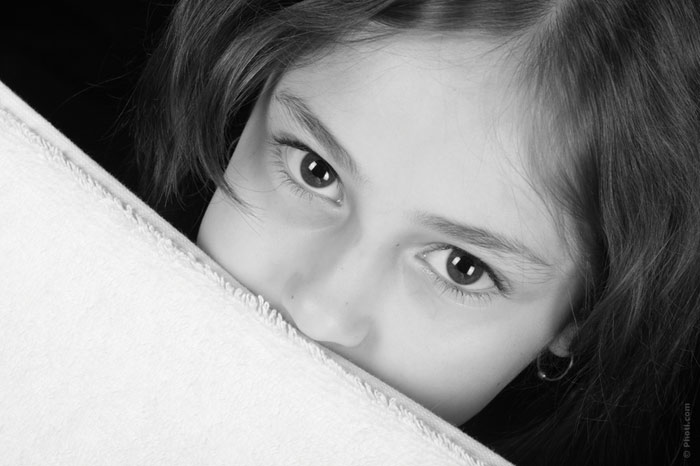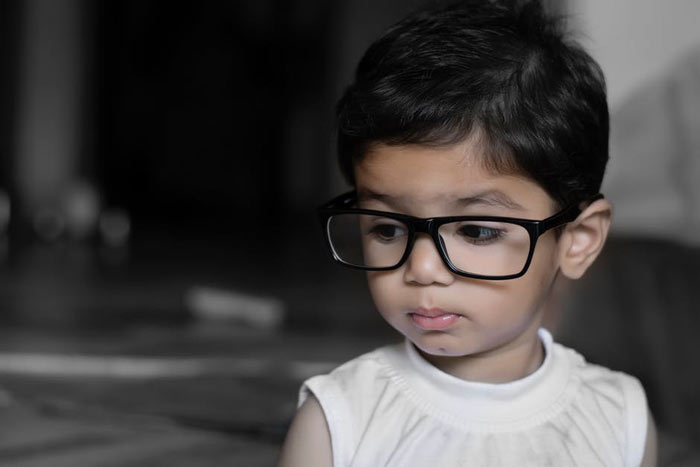Vision Problems in Children & Their Solutions
Child development depends greatly on good eyesight. The child’s eyes should be perfectly healthy, so they should have the benefit of regular examinations aimed at early detection of any vision issues there might be.
It is momentous that the child should have his or her eyes examined regularly, for issues that are discovered early can be addressed and cured with a higher rate of success.
 Can vision issues be detected at an early stage?
Can vision issues be detected at an early stage?
When babies are in their first year.
A baby over three months of age can be expected to follow with their eyes any toy or thing that is moved around within their visible area. Should you notice that the baby fails to observe and follow a moving object, consult your family practitioner.
Until they grow up to be 4 months old, babies can display strabismus, that is, their eyes can seem to be misaligned. But later than that, if you notice their eyes regularly drift inward or outward, it’s not quite the thing. You’d better talk to the doctor about it.
During the preschool period.
Now misaligned eyes in your child is a definite advice for you to consult a doctor. But there are vision issues which don’t proclaim themselves (like amblyopia, also known as a „lazy eye.“ Since there might be problems your kid won’t go complaining of, a regular check-up of their eyes is preferable. Tests exist that can ensure an excellent check oft he eyesight even with children who don’t read as yet.
In any age group.
Here is the list of symptoms that mean that you had better take the matter over to the doctor:
- Eyes show signs of poor alignment – they turn away, focus badly, or are cross-looking
- Eyes flutter sideways or veritcally in quick movements
- Pupils assume white or whitish hues
- The child complains of itchy eyes, pain or other eye discomforts
- Eyes become red, and the condition doesn’t wear itself out for days
- Eyes develop crustiness or pus
- Eyes get ceaselessly watery
- Eyelids tend to droop
- The child overreacts to light because their eyes are too sensitive
Some typical visual problems
Here are some eye disabilities that can be met in children. Practically all of them are identifiable at a preschool age using vision screening with an acuity chart.
The condition of a „lazy eye,“ also known as amblyopia, means that an outwardly healthy eye is nevertheless faulty. An eye can be „lazy“ either because the eyes are crossed or due to another refractive error affecting both eyes. Neglected, amblyopia leads to the brain beginning to disregard signals coming from the afflicted eye, and the eye loses its visionary power. Unless treated at an early stage, preferably before the kid turns 8, the condition remain incurable.
Then there is misalignment of the eyes called strabismus, when the eyes can look out, in, or be vertically misaligned. Chronic strabismus can cause amblyopia and leave one eye irreversibly blind. Identified early, the condition can be treated by placing a patch on the good eye thus making the straying eye see properly. Other treatments include wearing special glasses or, in the worst case, undergoing surgery.
The child having refractive errors cannot see clearly because the eyes’ shape doesn’t allow the light to be refracted properly. Again, bad refractive errors can result in amblyopia setting in. With kids of school age such errors cause nearsightedness, farsightedness or pronounced astigmatism.
Nearsightedness, or myopia, means your vision gets worse at the distance. To countervail it children are equipped with spectacles or contact lens.
The same treatment is applied to farsightedness, medically dubbed hyperopia.
What is known as astigmatism is faulty curvature of the eye‘s surface that can cause discomfort and/or blurry vision; it can be set right with spectacles.
Some other issues are more complicated and require proper attention; these include retinopathy of prematurity, an eye condition discovered in premature babies, and ones handed down in the family, like the following:
Retinoblastoma, being a malignant eye tumor most common among kids up to 3 years old. The suffering eye displays a whitish pupil and might not be able to see at all.
Newborns may develop infantile cataracts, which occurs when the eye’s lens is clouded.
More seldom seen in infants is congenital glaucoma – a problem that is often hereditary. Glaucoma means that the eye‘s drainage canals didn’t develop properly in the fetus thereby generating pressure in the eye that is higher than necessary. The condition requires medication and possibly surgery.
Should your kid develop genetic or metabolic eye conditions, for instance inherited problems that are conducive to cataracts or retinoblastoma, be sure to get them to undergo regular screenings and eye checks as early as you can on.
If you have reasons to suspect that your child is suffering from these disabilities, consult the child’s doctor at your soonest convenience.
Spectacles and contact lenses
These can be worn by children at any age, including little babies.
If your child is to wear specs, follow these pieces of advice:
- Leave the choice of the frame to the child.
- A little child under two will be better off with a plastic frame.
- Your child is older and went for a metal frame? Then spring hinges will stand them in better stead, serving longer.
- Your toddler is hyperactive? Help them with their specs by securing them with an elastic strap.
- Your kid has a serious eye problem? Consider getting special lenses, known as high-index lenses; apart from quality, they are lighter and slimmer.
- Your progeny is going in for sports? Go for polycarbonate lenses, which are also light and slim, but besides, they are shatterproof and impact-resistant. Their only drawback is they scratch easily, so they need extra care. Yet they may be a better choice for all children.
- Your baby was born with congenital cataracts? You may have to get the cataracts removed surgically as soon as it can be done. Afterwards he or she may have to wear contact lenses.
- Your child cries for contact lenses because he or she is sportive or wants to look better? They will have to understand contacts need proper care. Unless they learn how to handle them, when the lenses should be taken out, and how to take good care of them, they may keep having problems that could aggravate their eyesight.
The best ways of correcting faulty vision in the child are to be discussed with a medical expert.



